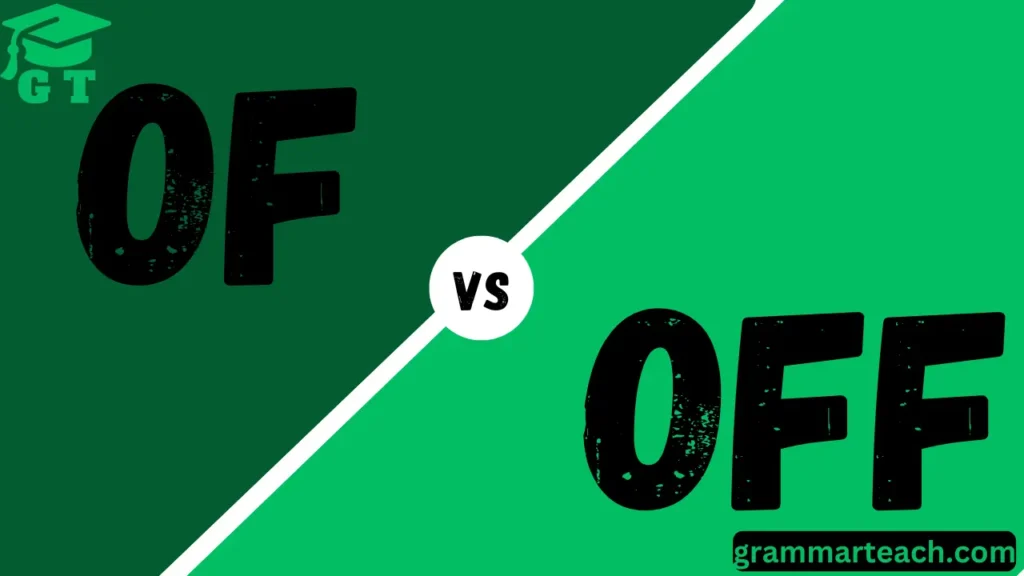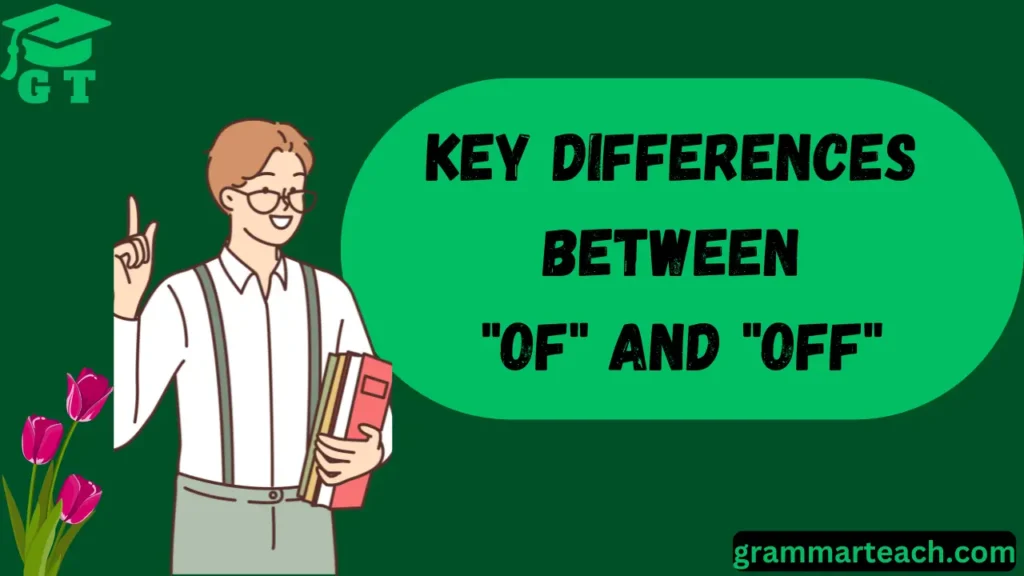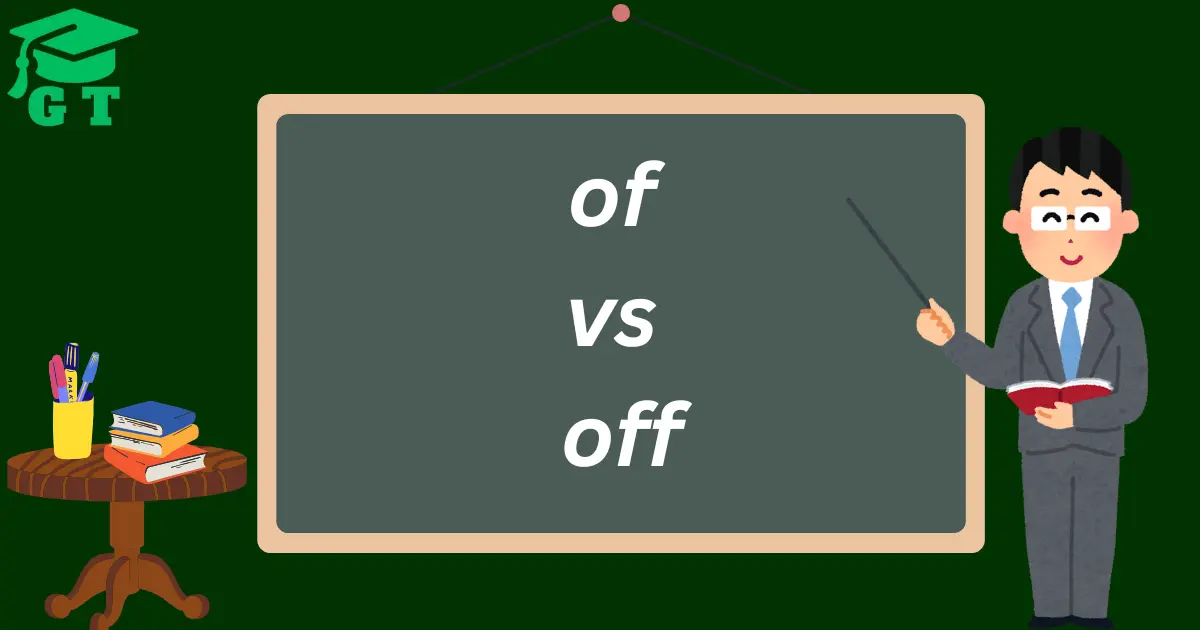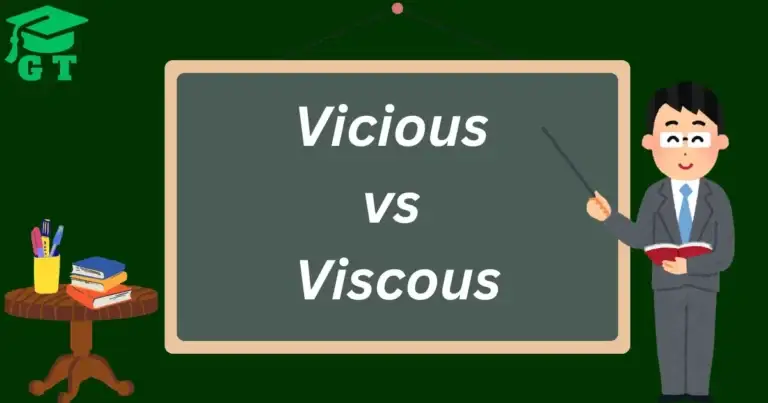Have you ever found yourself wondering whether to use “of” vs “off” in a sentence? You’re not alone! These two small but powerful words often cause confusion because they look and sound similar. But guess what? They mean very different things!
This article will help you understand the difference between “of” and “off” in the simplest way possible. We will explain what each word means, how to use them in sentences, and how to avoid common mistakes. We’ll also provide tables, examples, and easy tricks to help you remember the correct word to use.
By the end of this article, you’ll be a pro at using “of” and “off” correctly!
Of vs Off – What’s the Difference?

Both “of” and “off” are small words, but they are used in very different ways.
| Aspect | Of | Off |
| Definition | A word that shows belonging or relationship. | A word that shows separation, removal, or movement away. |
| Common Usage | Used to connect things. | Used when something is moving away or being removed. |
| Context | Used in normal talking and writing. | Used when talking about actions and movement. |
| Grammar Role | Preposition (a word that connects nouns). | Can be a preposition, adverb, adjective, or verb. |
| Common Mistakes | People use “of” instead of “off” in phrases. | People use “off” instead of “of” in descriptions. |
Now, let’s take a closer look at each word.
What Is “Of”?
Definition:
“Of” is a word that connects things. It helps show what something belongs to, what it is made of, or what it is related to. It is one of the most commonly used words in English and plays a key role in sentence structure.
Usage in Sentences:
The wheels of the car are round.
A glass of water is on the table.
She is a friend of mine.
The pages of the book are torn.
The scent of flowers fills the room.
Contextual Usage:
“Of” is primarily used in the following situations:
Possession: It shows ownership or belonging. Example: “The house of my parents is beautiful.”
Amount or Measurement: It indicates a quantity. Example: “A piece of cake.”
Composition: It describes what something is made of. Example: “A ring of gold.”
Description: It helps define characteristics. Example: “The story of his life.”
Common Mistakes:
Incorrect: “The top off the cake is pretty.”
Correct: “The top of the cake is pretty.”
Incorrect: “He is a member off the team.”
Correct: “He is a member of the team.”
What Is “Off”?
Definition:
“Off” is a word that shows separation, removal, or movement away. It means something is not attached anymore. It is often used to describe actions where something is detached, turned off, or moved away from a place.
Usage in Sentences:
Take your shoes off before entering.
The book fell off the table.
The lights are off because no one is home.
He jumped off the diving board.
The alarm went off early this morning.
Contextual Usage:
“Off” is commonly used in these situations:
Movement Away: When something moves from a position. Example: “She got off the bus.”
Separation or Detachment: When something is removed. Example: “Take the sticker off the wall.”
Turning Off: When stopping an electronic device. Example: “Turn off the TV.”
Spoiled or Bad Condition: When something has gone bad. Example: “The milk smells off.”
Common Mistakes:
Incorrect: “Take the lid of the jar.”
Correct: “Take the lid off the jar.”
Incorrect: “He jumped of the ladder.”
Correct: “He jumped off the ladder.”
Read More: Grammar or Grammer: Learn the Right Spelling & Easy Tricks!
Key Differences Between “Of” and “Off”

To make it even easier, here’s another table that breaks down the key differences:
| Feature | Of | Off |
| Meaning | Shows relationship or belonging. | Shows separation or movement away. |
| Example 1 | “The color of the sky is blue.” | “The hat fell off my head.” |
| Example 2 | “A cup of tea is hot.” | “Turn off the fan.” |
| Used in | Possession, belonging, amounts. | Movement, detachment, turning off things. |
| Word Type | Always a preposition. | Can be a preposition, adverb, adjective, or verb. |
Synonyms & Antonyms
| Word | Synonyms | Antonyms |
| Of | Belonging to, about, from | Not related to |
| Off | Away, apart, detached | On, attached |
Which One Should You Use?
A simple trick to remember is:
Use of when talking about belonging or relationships.
Use off when talking about separation or movement.
For example:
“A slice of pizza” (shows relationship).
“Take your shoes off” (shows separation).
Why Do People Confuse “Of” and “Off”?
People often confuse these words because they sound similar when spoken quickly. In old English, some words that used to be spelled with “of” later changed to “off” due to pronunciation shifts. This historical confusion still affects modern usage today!
Read More: Much vs Many: Easy Guide to Their Differences & Usage
Final Thoughts
Understanding the difference between “of” and “off” is crucial for clear communication. While “of” is used to show relationships, belonging, and descriptions, “off” is used to indicate separation, movement, or turning something away. Though they look similar, their meanings are completely different. Knowing when to use each correctly can help you avoid common mistakes and improve your writing skills.
The best way to master these words is through practice. Read and write more, and pay attention to how these words are used in books, articles, and conversations. If you ever feel confused, just remember: “of” connects and shows belonging, while “off” separates and shows movement. Keep practicing, and soon, choosing between “of” and “off” will become second nature!




